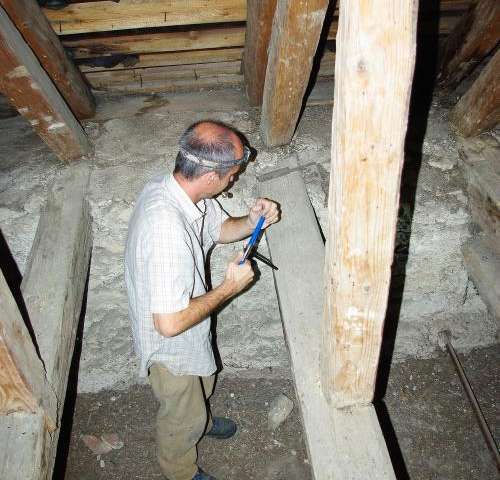Eastern Europe: Tree rings reveal climate variability and human history

Socio-cultural disruptions in Eastern Europe during the past millennium coincided with periods of decreased temperature, and recent temperatures in this region are warmer than at any previous time during this period. These two key findings derive from a dendrochronological study that was conducted by an international research team under the lead of Ulf Büntgen from the Swiss Federal Research Institute WSL and the University of Berne. The scientists, for the first time ever, reconstructed Eastern European springtime temperatures continuously back into medieval times. Their study was published January 14th, 2013 in the prestigious journal Proceedings of the National Academy of Sciences, USA.
A total of 545 precisely dated tree-ring width samples, both from living trees and from larch wood (Larix decidua Mill.) taken from historical buildings in the northern Carpathian arc of Slovakia, were used to reconstruct May-June temperatures yearly back to 1040 AD. The tree-ring data from the Tatra Mountains best reflects the climate history of Eastern Europe, with a geographical focus on the Baltic. The tree-ring record reveals several cold phases around ~1150, 1400, and in the 19th century. Mild springtime conditions occurred in the first half of the 12th century, as well as from ~1400-1780. The amount of climate warming since the mid-20th century appears unprecedented in the millennium-long context.
In addition to the development of the tree ring-based temperature history, the interdisciplinary research team* compared past climate variability with human history. Plague outbreaks, political conflicts and migration movements often matched periods of cooler temperatures. Moreover, fluctuations in settlement activity appear to be linked to climate variability. The Black Death in the mid-14th century, the Thirty Years War between ~1618-1648 and the Russian crusade of Napoleon in 1812 are three most prominent examples of climate-culture interactions.
The new evidence from Eastern Europe partially confirms similar observations from previous dendroclimatological investigations in Central Europe. However, the lead author of both studies, Ulf Büntgen, is cautious about making simplified conclusions: "the relationship between climate and culture is extremely complex and certainly not yet well enough understood. Nevertheless, we now better recognize that well documented and carefully analyzed tree-ring chronologies can contain much more information than supposed so far". Thus, more data, independent studies and interdisciplinary approaches are of great interest for the enhancement of future knowledge.
More information:
Büntgen, U., et al. (2013). Filling the Eastern European gap in millennium-long temperature reconstructions. Proceedings of the National Academy of Sciences, USA.
Provided by Swiss Federal Institute for Forest, Snow and Landscape Research